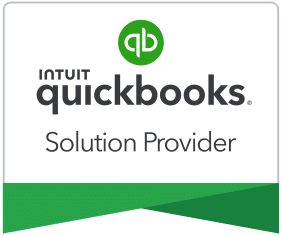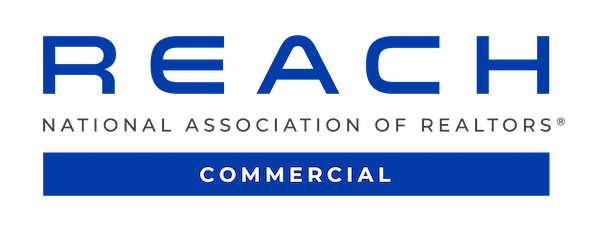These are the top 7 common misconceptions about commercial real estate insurance. Commercial insurance is becoming an increasingly relevant topic of conversation with individuals and organizations involved in the real estate industry. Gone are the days of insurance being a last-minute, easy task to accomplish before a closing transpires. Furthermore, insurance companies no longer engage in bidding wars to win business through the lowest premiums. The insurance market is in a hardened state, particularly around property coverage. The evidence suggests that this isn’t necessarily a fleeting trend, but rather our new reality.
What made the list?
Our suggestion to clients with real estate holdings is to focus on controlling what they can control (the insurance market is not one of those things). Among a list of areas they have leverage, one of particular focus is tenant insurance verification. While this process can prove significant in securing the best offering for yourself as a real estate owner, we acknowledge that it also comes with challenges, complexities, and misconceptions in determining whether your tenant is properly assuming the risk you transfer to them.
In today’s blog, we discuss the top seven commercial real estate insurance misconceptions. You can also watch our previously recorded webinar, 7 Insurance Misconceptions for Commercial Building Owners.
Misconception #1: All commercial insurance is the same.
The reality is that insurance policies are legal contracts. While the Insurance Services Office (ISO) provides forms used by different carriers, it is almost certain that one insurance policy will differ from another in some (if not many) respects. They have different forms, additions, endorsements, and terms. To review your specific policy effectively, it is helpful to understand a few key definitions.
Common Definitions
- Insured: The Individual, organization, or entity that is covered by the insurance policy.
- Additional Insured: An entity or person added to the policy who also has benefits from coverage under the policy.
- Waiver of Subrogation: The legal waiver of an insurer’s right to recover from damages paid in the insurance contract.
- Primary and Non-Contributory: Clauses in insurance contracts that specify the order of which insurance policy will respond first, and what level of contribution each is obligated to.
- Certificate of Insurance: A document provided to requesting parties that outlines key policy details and proof of insurance at the time of issuance.
- General Liability: Coverage for an entity’s liability arising from its premise, operations, products, and completed operations.
These are just a handful of the definitions you may see in a commercial insurance policy. It’s always best practice to speak with your insurance provider to ensure the policies in place are in your best interest.
Misconception #2: You don’t need to read and understand your policy
Insurance policies can be hundreds of pages long. They’re lengthy, technical, and very dry. Of course, as a commercial real estate owner, you don’t have enough hours in the day to achieve all the relevant and important things, including reading your insurance policies from cover to cover. To make the most of policy reviews, it’s crucial to comprehend the overall structure of policies. This way, you can carefully examine all the sections that you consider important as soon as they’re released.
DICE
An easy way to read and understand a commercial insurance policy structure is through the acronym DICE, which stands for “Declarations, Insuring Agreements, Conditions, and Exclusions.”
- Declarations: Typically, the high-level overview of what exists within the policy. This will typically show the locations, assets, limits, etc. This is also the place where the premium outlays are shown.
- Insuring Agreements: This is the legal language that states how coverage is triggered and what the insurer is agreeing to insure. This is essentially where the insurance company states, “You pay us a premium, this is what we’re covering.”
- Conditions: This outlines the obligations of the parties in the agreement. This section breaks down the things that owners are required to do or comply with in order to make sure that the insurance coverage is applicable. It also states the things that the insurance company is going to do on the owner’s behalf.
- Exclusions: These are the things that the insurance company states outwardly that they are not covering.
Joe Vens, Risk Advisor at First MainStreet Insurance, tells his customers to read their policy back to front.
“I think it is beneficial to start with what the insurance company is outwardly telling you they are not covering, and then work your way back into the insuring agreements to see what still exists after the exclusions.”
Joe Vens, Risk Advisor at First MainStreet Insurance
People buy insurance because they want it to respond properly. By working on the front end and comprehending the policy, you can alleviate anxiety about potential coverage in the event of an insurance-related incident.
Misconception #3: Every Certificate of Insurance is the same
It is essential to first understand what a Certificate of Insurance is. A COI or certificate of insurance summarizes the coverage that exists at the time of issuance. It is essential to note that the COI is not an insurance policy in itself. You can learn more about COIs by reading our articles What Is a Certificate of Insurance? and The Ins and Outs of Certificates of Insurance (COI).
Parts of a COI
- Producer: The agency that issues the certificate.
- Insured: The person or organization that is insured. For the purposes of this article, this refers to the tenant who verifies coverage to their landlord.
- List of Insurers: This is a list of different insurance agencies that provide coverage.
- Coverages: List of various types of insurance, policy numbers, effective dates, and limits.
In summary, certificates of insurance can serve as a verification tool. Always ensure tenants carry the appropriate coverage and policies, and that they list their landlord as an additional insured on their policy. Why? To ensure that the tenant’s insurance policy provides coverage for defending the landlord in case of a lawsuit for which the tenant is responsible.
Misconception #4: You can manage COIs on your own
The process of managing certificates of insurance can be challenging and is often one of the first things that slip through the cracks. If you’re an owner with only one tenant, you may be able to keep track of it yourself using a spreadsheet. However, if you’re an owner with a portfolio of multiple assets and tenants, it becomes overwhelming.
How STRATAFOLIO helps
By leveraging proprietary machine learning algorithms, tenants can upload a copy of their COI, and our system will populate the owner’s required policy information. Once in our system, we compare the lease requirement against the policy information and flag discrepancies.
We send email alerts when the tenant’s policies are coming up for renewal to the tenant, the owner, and the insurance broker. By taking out the guesswork, we make managing COIs a breeze.
Misconception #5: Tenants can elect their own coverage
Leases are the documents that dictate who is responsible for what insurance coverage. You can state who is responsible for insuring the interior contents of a building and determine the legal language required within liability policies to ensure proper protection for requesting parties with applicable coverage.
Commercial property owners should invest the time and energy upfront in determining what insurance agreements should be included in their leases. We recommend working with your commercial insurance advisor, if they specialize in reviewing these agreements, to ensure the correct language is included in the lease agreements.
Misconception #6: Securing commercial insurance can be acquired easily
The insurance market is currently experiencing a hard phase, where insurance pricing and rates have increased while the capacity has decreased. Additionally, fewer carriers are willing to provide insurance. Obtaining commercial insurance can be a lengthy process at present. How can commercial owners combat this?
Be proactive
It takes more than a day to secure insurance for a commercial building. It all depends on the age and the characteristics of your tenant makeup. Insurance agencies, such as First MainStreet Insurance and their insurance company partners, can require anywhere from a week to several months or longer to underwrite and place coverage properly.
Consider the makeup of your tenants. Are they a fireworks dealer or a shoe store? Because there are factors you may not even consider. We recommend speaking with your insurance agent early on and providing them with full transparency, so they can best support you.
Misconception #7: Property owners have no control over their insurance
Many commercial owners may think they have no control over pricing/terms/coverage. Especially given the hard market we sit in today. Creating cash flow reports, maintaining financial health, and understanding building and tenant characteristics can lead to better rates and terms for commercial real estate owners.
Owners should prepare to offer their insurance advisor insight, information, and complete transparency. So, the advisor can provide the best support in placing reasonably priced coverage that offers optimal protection.
Using STRATAFOLIO to track the location, age, square footage, vacancy, and occupancy of your assets, among other details, can help commercial property owners prepare for when they need this information.
STRATAFOLIO also tracks tenant information, certificates of insurance, rent rolls, cash flow, and so much more. Best of all, this information is exportable through dynamic reports. This makes it easy to send it right to your insurance agency. A well-prepared, organized, and sophisticated owner has a greater likelihood of lower rates and better terms. Check out our knowledge base article on How to Automate Your Certificates of Insurance (COI) to see how we can save time for you and your team through automation and artificial intelligence.
Manage Commercial Real Estate Insurance with STRATAFOLIO
Use the seven misconceptions to educate yourself and your team. This way, if and when an insurance event occurs, you are properly prepared.
Reach out to STRATAFOLIO for a personalized demo to see how we can help with COIs and beyond. Be sure to contact Joe Vens at the contact information below for discussions on risk transfer, securing insurance coverage, and proper risk management within your real estate organization.








